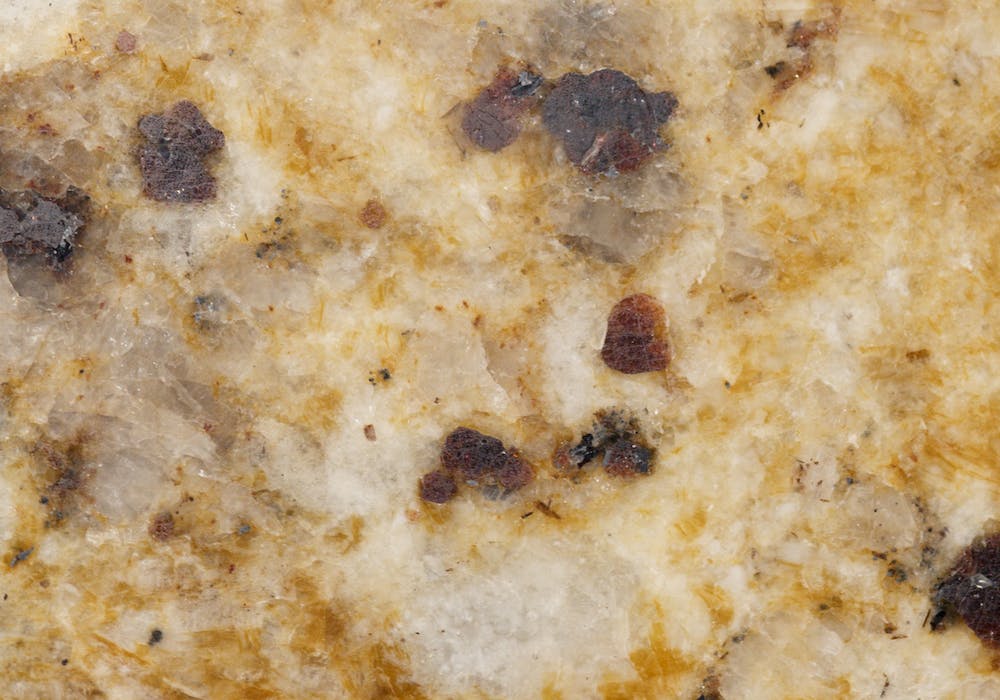More
What Is The Role of Decomposers in Ecosystem? A Simple Guide

The role of decomposers in ecosystem are of great importance for the survival of every living thing, from plants to animals and microscopic creatures. The group of organisms called decomposers form the last link in the food chain.
Decomposers are like nature’s ultimate recyclers! They’re these tiny but mighty organisms that work hard to break down dead stuff, like plants and animals, into simpler bits. Think of them as the ultimate clean-up crew in ecosystems, helping to keep things tidy by breaking down old stuff into useful nutrients.
Role in Recycling Nutrients
These guys play a really cool role in nature’s big recycling program. They take all that old stuff and break it down, releasing nutrients back into the environment. It’s like they’re giving nature a makeover, turning old things into valuable elements that other living things can use to grow and thrive.
Contribution to the Biosphere
Imagine them as the magical beings behind the scenes. They transform dead things into essential elements, like carbon and nitrogen, which then get reused by plants, animals, and basically everything else in the environment. They’re like nature’s champions, making sure everything stays balanced and ready for new life to take root.
Types of Decomposers
Fungi:
Fungi, such as molds and mushrooms, are essential decomposers. Their mycelium, a network of thread-like structures, breaks down organic matter. Fungi release enzymes that digest complex compounds, aiding in the decomposition process. They thrive in diverse environments, contributing significantly to the breakdown of dead material and the recycling of nutrients.
Bacteria:
Bacteria, microscopic organisms, are prolific decomposers found virtually everywhere. They are vital in recycling nutrients from organic matter. Various bacterial species break down complex organic substances, like cellulose and proteins, into simpler forms, facilitating the return of essential nutrients to the ecosystem.
Insects:
Insects, including beetles, ants, and flies, are instrumental in the decomposition of organic matter. They accelerate the process by feeding on dead plants and animals, aiding in their breakdown. Some insects also lay eggs in decaying material, and their larvae consume and break down organic matter, aiding in nutrient recycling.
Earthworms:
Earthworms play a crucial role in soil decomposition. Their constant movement and feeding habits help break down organic matter in the soil. As they burrow and consume decaying plant material, they enhance soil aeration and nutrient availability, contributing significantly to the breakdown of organic matter and nutrient cycling in ecosystems.
Decomposers in Nutrient Cycling
Nutrient Breakdown Process:
Decomposers play a vital role in the breakdown of organic matter. During decomposition, microbes like bacteria and fungi break down complex molecules into simpler forms. Enzymes released by decomposers break down dead plants and animals into essential elements, such as carbon, nitrogen, and phosphorus, making these nutrients available for reuse by living organisms.
Nutrient Reintroduction:
Decomposers contribute to the reintroduction of nutrients into the environment. As they break down organic matter, nutrients are released into the soil, water, and air. These nutrients become available to plants, supporting their growth and serving as a vital source for producers in the ecosystem. This process of nutrient recycling ensures a continuous flow of essential elements, sustaining life in various ecosystems.
Importance Of Decomposers in Ecosystems
Soil Enrichment:
Decomposers play a crucial role in soil enrichment by breaking down organic matter. As they decompose dead plants and animals, they release nutrients into the soil, enhancing its fertility. This process enriches the soil with essential elements like nitrogen, phosphorus, and potassium, providing a conducive environment for plant growth.
Plant Growth:
Decomposers indirectly aid in plant growth by recycling nutrients. The nutrients released by decomposers from organic matter are absorbed by plant roots, facilitating their growth and development. These nutrients act as vital components for various metabolic processes within plants, ensuring their health and vigor in the ecosystem.
Waste Management:
Decomposers assist in waste management by breaking down dead organic material. They help in the decomposition of organic waste, including fallen leaves, dead animals, and plant debris. This natural recycling of organic matter prevents the accumulation of waste, maintaining a balanced ecosystem and preventing potential environmental hazards.
Impact on Biodiversity
Creation of Habitat:
Decomposers significantly contribute to creating habitats for various organisms. Their activity in breaking down organic matter and recycling nutrients generates suitable environments for other species. By transforming decaying material into nutrient-rich substrates, they foster diverse microhabitats, offering niches for numerous organisms to thrive.
Influence on Food Webs:
Decomposers play a fundamental role in sustaining food webs. Their activity at the base of the food chain provides nutrients essential for primary producers. These nutrients are then passed through the trophic levels, supporting the growth of herbivores, carnivores, and omnivores. Consequently, decomposers indirectly influence the stability and structure of ecosystems by facilitating energy flow and nutrient cycling within food webs.
Human Interaction with Decomposers
Agriculture:
In farming, these decomposers are like nature’s secret helpers! Farmers use special organisms like bacteria and fungi to break down things like compost and animal poop. You know what’s cool? It’s like these little guys turn all that yucky stuff into super nutrients for the soil. So, the soil becomes super healthy, helping plants grow better and giving farmers awesome crops.
Waste Treatment:
When you throw your kitchen scraps or other organic stuff into the compost bin, these tiny microbes get to work. They break down all that stuff and turn it into this amazing, rich soil called compost. It’s like a superhero recycling squad! Plus, in big waste systems, they help break down all the yucky waste, making useful stuff like compost or even biogas. It’s like turning garbage into something really helpful for the environment.
These little creatures are like superheroes against pollution! Some of them have these cool powers to break down bad stuff like oil spills or chemicals in the soil. So, they’re like the cleanup crew for our planet, making sure our environment stays healthy and safe.
Challenges and Conservation:
Threats:
Decomposers face several threats in today’s environment. Habitat destruction, caused by deforestation and urbanization, disrupts their ecosystems, leading to a decline in their populations. Additionally, pollution from chemical pesticides and fertilizers can adversely affect decomposer communities, hindering their vital role in nutrient cycling and soil health. Climate change-induced alterations in temperature and rainfall patterns further impact their habitats, posing a risk to their survival.
Conservation Efforts:
Various conservation efforts aim to protect decomposer populations and their habitats. Initiatives promoting sustainable land management practices prioritize maintaining healthy soil ecosystems, fostering the growth of decomposer populations. Educating communities about the significance of preserving these organisms and their habitats helps raise awareness about their crucial role in maintaining ecological balance. Implementing regulations that limit the use of harmful chemicals and support eco-friendly practices also contributes to safeguarding decomposer communities and the ecosystems they support.
Conclusion:
Decomposers are the unsung heroes of our ecosystems, performing invaluable tasks that ensure the sustainability and health of our environment. Their role in recycling nutrients, enriching soils, and facilitating waste management is critical in maintaining a balanced and thriving ecosystem. Despite facing challenges such as habitat destruction and pollution, efforts in conservation and awareness are essential to protect and preserve these tiny but mighty organisms. Recognizing and valuing the role of decomposers is crucial for sustaining biodiversity, soil health, and the overall well-being of our planet.
FAQs:
How do decomposers help in Mcq?
Decomposers serve as nature’s cleaners, breaking down deceased plants and animals. They aid in nutrient recycling and create room for new life in the biosphere by decomposing the deceased organisms.
Are decomposers helpful to plants?
Decomposers support plants by breaking down organic matter, which was once alive, and releasing nutrients into the soil. These nutrients become available for the plants growing in that soil to absorb and utilize for their growth.
Related Articles:
More
How to Achieve Consistent Results with Your Paint Spray Booth

Achieving consistent results in a paint spray booth involves more than just having the right equipment. It’s about fine-tuning various aspects of your booth to ensure the best possible outcomes. Here are some uncommon yet effective strategies to enhance the performance of your paint spray booth.
Implement Ionic Air Purification
Maintaining a clean environment inside your paint spray booth is crucial for achieving high-quality finishes. Ionic air purification systems can significantly reduce airborne contaminants. These systems work by emitting negative ions that attract and neutralize particles such as dust, pollen, and even smoke. By incorporating ionic air purifiers, you can ensure that the air inside your booth remains clean and free from particles that can compromise your paint job. This is especially beneficial for those using a high-tech spray paint booth or a commercial spray paint booth where precision is key.
Use Pulsed Air Filtration Systems
Traditional filtration systems can only do so much to keep the air inside your booth clean. Pulsed air filtration systems, on the other hand, provide an advanced level of air purification. These systems use short bursts of compressed air to remove accumulated dust and particles from the filters, ensuring that they remain unclogged and effective. This method not only prolongs the life of your filters but also maintains optimal airflow within the booth, which is essential for achieving a consistent finish. Whether you have a large paint spray booth or a small spray paint booth, incorporating pulsed air filtration can make a noticeable difference.
Calibrate Booth Lighting for Color Accuracy
One of the most overlooked aspects of achieving consistent results in a paint spray booth is lighting. Calibrating your booth lighting to ensure color accuracy can prevent costly mistakes. High-CRI LED lights are ideal for this purpose as they provide a natural and accurate color representation. By adjusting the lighting to mimic daylight conditions, you can ensure that the colors you see in the booth are true to their actual appearance. This is particularly important for professionals using a professional spray paint booth or those offering spray paint booth rental services, where client satisfaction is paramount.
Install Smart Humidity Control Modules
Humidity levels inside your paint spray booth can have a significant impact on the final result of your paint job. Installing smart humidity control modules allows you to monitor and adjust the humidity levels in real-time. These modules can automatically regulate the humidity to maintain optimal conditions for painting, preventing issues such as blistering or uneven drying. This technology is a must-have for any affordable paint spray booth or custom spray paint booth aiming to deliver consistent, high-quality results.
Adopt Electrostatic Grounding Techniques
Electrostatic grounding is a technique that can greatly enhance the efficiency and consistency of your paint spray applications. By grounding the object being painted, you can reduce overspray and ensure that the paint particles are attracted to the surface evenly. This method not only improves the quality of the finish but also reduces paint waste. Implementing electrostatic grounding is particularly beneficial for those using a mobile spray paint booth or a ventilated paint spray booth, where portability and efficiency are critical.
Utilize Airflow Visualization Tools
Understanding and optimizing the airflow within your paint spray booth is essential for achieving consistent results. Airflow visualization tools, such as smoke sticks or digital airflow meters, can help you identify and correct airflow issues. By visualizing the airflow patterns, you can make adjustments to ensure that the air moves evenly throughout the booth, preventing areas of turbulence or stagnant air. This is crucial for maintaining a dust-free environment and achieving a smooth, even finish. Whether you are using a home spray paint booth or an industrial spray paint booth, these tools can provide valuable insights.
Maintain Your Spray Booth Regularly
Regular maintenance is key to ensuring that your paint spray booth continues to perform at its best. This includes routine cleaning, filter replacements, and inspections of all mechanical and electrical components. A well-maintained booth will not only produce consistent results but also have a longer lifespan. For those offering spray paint booth installation or spray paint booth maintenance services, emphasizing the importance of regular upkeep can help clients achieve the best possible outcomes.
Achieving consistent results with your paint spray booth requires a combination of advanced technologies and diligent maintenance. By implementing ionic air purification, pulsed air filtration systems, calibrated booth lighting, smart humidity control modules, electrostatic grounding techniques, and airflow visualization tools, you can ensure that your booth operates at peak performance. These strategies, coupled with regular maintenance, will help you deliver high-quality finishes every time, whether you’re working with a small spray paint booth or a large paint spray booth.
More
Enhancing Efficiency: Signature Stamps for Checks

Optimize your check-signing process with signature stamps designed specifically for checks. Experience efficiency and security in one simple tool.
The domain of signature stamps goes beyond mere simplicity, holding deep importance in both personal and professional fields. These instruments are crafted to replicate signatures swiftly and reliably, fostering convenience and dependability. In this discourse, we delve into the multifaceted domain of signature stamps, encompassing their categorizations, applications, pre-purchase considerations, operational efficacy, potential limitations, and associated risks.
Varieties of Signature Stamps:
Pre-inked Signature Stamps:
These stamps feature an integrated ink reservoir within the stamp pad, ensuring consistent and lucid impressions.
Self-inking Signature Stamps:
Equipped with an internal ink mechanism that replenishes ink after each use, these stamps cater excellently to frequent applications.
Rubber Stamp Signature Stamps:
Traditional in nature, these stamps necessitate a separate ink pad while offering adaptability in terms of customization.
Utilizations and Implementations:
The application spectrum of signature stamps spans diverse domains:
Commercial and Corporate Utility:
Facilitating paperwork streamlining, document endorsements, and personalized correspondence augmentation.
Personal Integration:
Simplifying tasks such as check endorsements, document signing, and letter authorization.
Legal and Administrative Utilization:
Ensuring uniformity and expediency in administrative undertakings and legal documentation authentication.
Pre-Purchase Considerations:
Before committing to a signature stamp acquisition, it is imperative to contemplate:
Imprint Quality Assurance:
Ensuring the stamp yields legible and coherent impressions consistently.
Endurance and Longevity:
Opting for stamps fashioned from resilient materials capable of withstanding recurrent usage.
Customization Parameters:
Selecting stamps that accommodate customization of signature designs and supplementary text.
Compliance with Legal Precepts:
Familiarizing oneself with legal stipulations concerning signature stamp usage within one’s jurisdiction.
Operational Guidelines for Signature Stamps:
To maximize the efficacy of signature stamps, adhere to the following guidelines:
- Adequate Handling and Safekeeping:
- Store stamps in secure confines and handle them judiciously to avert potential damage.
- Imprint Clarity Assurance:
- Apply uniform pressure during stamp deployment to engender sharp and distinct impressions.
- Integrity Maintenance Strategies: Safeguard stamps against unauthorized access and misuse to forestall fraudulent activities.
Potential Limitations and Risks:
While signature stamps epitomize convenience, they harbor inherent risks:
Forgery Vulnerability:
Unauthorized access to signature stamps poses the risk of perpetrating fraudulent activities.
Legal Ramifications:
Acquaintance with the legal repercussions of signature stamp utilization, particularly in contractual and official document contexts, is imperative.
Risk Mitigation Measures:
Implementation of security protocols, including access restriction and surveillance, is paramount in curbing potential misuse.
Conclusion:
In summation, signature stamps emerge as indispensable assets that streamline operational workflows, augment efficiency, and inject a personalized essence into documentation. By assimilating insights into their variants, applications, considerations, and attendant risks, individuals and enterprises can harness the transformative potential of signature stamps adeptly while avoiding associated pitfalls. Whether endorsing checks, validating documents, or optimizing administrative processes, signature stamps represent an ideal solution catering comprehensively to diverse signing requisites.
FAQs:
Are signature stamps legal?
Certainly, signature stamps commonly serve as a legally recognized form of authorization.
How do I get a stamp of my signature?
You can get a stamp of your signature by creating a digital image of your signature and ordering a custom stamp online or at a stationery store.
Can you use signature stamps on checks?
Certainly, signature stamps can typically be used to sign checks, but it’s essential to take precautions. Individuals should update bank records to validate the use of stamps and closely control access to prevent any misuse.
Read Also:
Pros and Cons of BYOD: Opportunities and Risks For Companies
More
How To Choose a Good Watermelon? 4 Simple Tips

Watermelon is a must-eat fruit in summer. It is cool, juicy and sweet. Whether eaten directly or made into juice, it can bring a touch of coolness to the summer. However, there are many questions on how to choose a good watermelon based on its appearance. This is a major problem for consumers. Regarding this, the Agri-Food and Food Administration has personally revealed 5 tips so that everyone will never make a mistake when buying watermelon!
How to choose a watermelon?
Although it is difficult to define the ripeness of a fruit simply based on its exterior, there are still some ingenious ways to choose your Watermelon. We will reveal the secrets to you today!
Size and Shape
Good watermelons are generally medium sized, neither too small nor too large. The juiciest watermelons are generally heavier because they are full of water. The shape of a good watermelon is necessarily symmetrical or homogeneous: this indicates that it received a regular amount of water and sunlight during its growth. The presence of dents or cuts signals the opposite.
The Skin
This famous skin which prevents you from seeing the flesh inside to judge the condition of the fruit is, in truth, an indicator. And if we have to remember just one thing, it’s that a beautiful, unblemished watermelon will never be the best. The yellow spot present on watermelons is one of the most important criteria. This stain is completely normal: it forms on contact with the ground. The more yellow or orange this spot is, the darker it is, the tastier the watermelon will be. If the spot is white, it indicates that the fruit was harvested too early.
The gray traces, like spider webs, also guarantee a good sweet taste. In fact, these traces are a sign that the bees have come in large numbers to forage on the watermelon . And if these came, it was because the fruit was very sweet. Of course, this can be annoying for recipes where you have to use the skin of the watermelon (because yes, everything is eaten in the watermelon). You will then have to make a choice based on your needs. Finally, the skin of a watermelon should have a matte appearance and be a deep green color. The shine means it is not yet mature.
Touch the stem of the watermelon to identify a ripe fruit
The stem of a watermelon is also a good way to know its ripeness. A very green tail indicates that the fruit was harvested too early. Conversely, a very dry stem is a sign that the watermelon has reached a good level of maturation and is ready to be enjoyed.
Identify a good watermelon by tapping it
Watermelon fans have a special trick for recognizing a good fruit : it involves tapping the skin with your fingers. If the watermelon makes a full, tenor sound, it is ready to be eaten. Conversely, a deep or hollow sound means the fruit is unripe. The difference may seem small, but fruit lovers always get there in the end.
How to store it?
The best is to keep it in the refrigerator!
Unopened, you can easily store your watermelon for a week, preferably in a cool, well-ventilated place. If, on the contrary, it is already started, protect its flesh with cling film to prevent it from getting damaged and drying out.
And there you have it, thanks to these tips you will become a pro when choosing your Watermelons.
FAQs
How to choose a delicious watermelon?
Because as the watermelon matures, a large part of the water content will be expelled and more sugar will accumulate, so the weight of the mature watermelon is always lighter. So choose lighter watermelons of the same size. To sum up, when choosing a watermelon, you should choose one with a small navel, a curved base, clear lines, a crisp and vibrating sound when struck, and a light weight. Have you learned this?
What to do with unsweetened watermelon?
Methods/steps: Cut the watermelon into even and unequal portions, and sprinkle some salt and sugar on top . This will change the original tasteless taste of the watermelon from the outside. It is also a way to eat it, but before doing so, it is best to put the watermelon in the refrigerator. Freeze it and make it again, it will taste better.
Read Also:
-

 Top2 years ago
Top2 years ago2022 US House committee releases Trump’s tax returns, capping a years-long battle
-

 Auto1 year ago
Auto1 year agoTop Porsche Taycan Incentives: Save Big
-

 Business1 year ago
Business1 year agoBeware Of Fake Emails And Fake Apple Pay Images
-

 Business1 year ago
Business1 year agoDoes 7-Eleven Take Apple Pay
-

 Top2 years ago
Top2 years agoInterview With Niantic CEO John Niantsullivan
-

 News1 year ago
News1 year agoUSPS EMPLOYEE ASSISTANCE PROGRAM SERVICES AND BENEFITS
-

 Top1 year ago
Top1 year agoUnderstanding the Healing Process of Nose Piercings – A Comprehensive Guide
-

 Cryptocurrency1 year ago
Cryptocurrency1 year agoBridging the Gap: Binbex Futures
